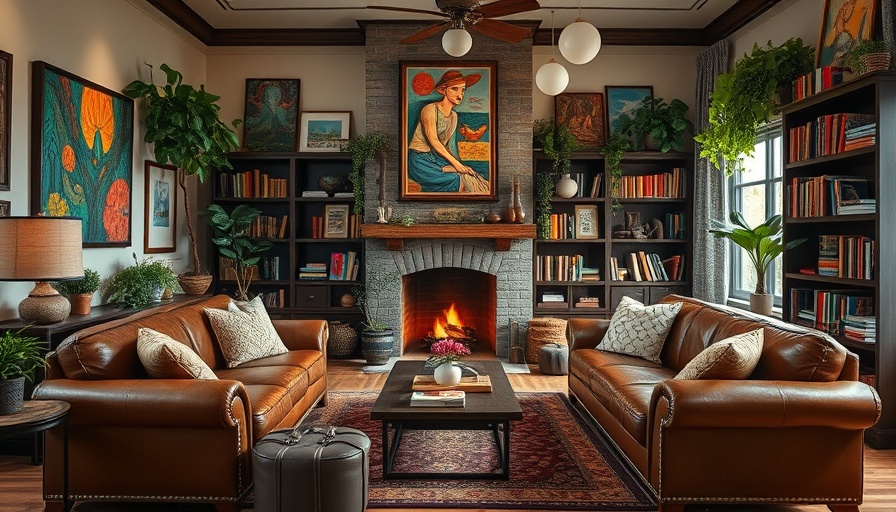
Embracing Organized Maximalism in Your Home
In the evolving landscape of interior design, organized maximalism has emerged as a refreshing alternative to the austere aesthetics of minimalism. This design philosophy celebrates the beauty of abundance—encouraging individuals to showcase their collections and personal treasures while maintaining a sense of order and intention. It’s not merely about filling a space; it's about curating a narrative that reflects your personality and experiences.
The Philosophy Behind Organized Maximalism
Understanding organized maximalism begins with a shift in mindset. Rather than viewing possessions as clutter, this design approach invites you to see them as storytelling tools. According to Francesca Ruggiero of Organise My Clutter, “Organized maximism is all about honoring your abundance intentionally.” This philosophy encourages thoughtful curation—ensuring every item you own has a designated place, a purpose, and a backstory that resonates with you.
Creative Storage Solutions for Maximalist Spaces
In a world awash with options, creative storage becomes essential. It serves not only to organize but also to enhance the overall aesthetic of your maximum space. Angela of Studio Wallflower emphasizes the importance of dual-purpose storage solutions—“I like to organize my space with pieces that serve a dual purpose, like mix-and-matching storage boxes in different prints and patterns.” This idea not only reduces visual clutter but allows for creativity in how things are displayed. A mix of shapes, sizes, and styles in your storage can seamlessly blend function and flair.
Designated Spots: A Secret to Clarity
The impact of well-placed decor shouldn’t be underestimated. Maia Barnett, founder of maiorganization, highlights that “thoughtful placement and giving each piece a purposeful spot” is crucial for achieving a harmonious environment. This intentionality prevents chaos, allowing your prized belongings to breathe and be appreciated rather than lost in a sea of excess.
Color Coordination: The Key to Visual Harmony
Grouping items by color, theme, or function creates a visually pleasing narrative. It’s a simple yet effective technique to balance a bold maximalist style. Think about how you might organize your books by color or decorative items that share a common hue. This subtle alignment draws the eye and provides a sense of structure amid the delightful chaos.
The Right Lighting: Spotlighting Your Treasures
Another essential element in organized maximalism is lighting. Strategic use of light can dramatically focus attention on your decorations. Whether through natural light or strategically placed lamps, illuminating specific areas can make a space feel inviting and highlight the unique story of your items. This not only helps define the character of the space but also its emotional tone.
Grounding the Space with Neutrals
While color and abundance are foundational to organized maximalism, incorporating neutral hues can ground the environment. Neutrals provide a necessary balance, making vibrant patterns and collections feel less overwhelming. They act as a visual pause, allowing the eye a moment of respite before moving on to the next colorful display of personality.
Future Trends: Where Organized Maximalism is Headed
The journey of organized maximalism is just beginning. As more homeowners turn to personalize their spaces, it's likely that this trend will transform the way we define and relate to home decor. Expect to see greater integration of sustainability—where everyday items are both functional and eco-friendly—and continued emphasis on cultural expression through decor that represents heritage and personal history.
Conclusion: Creating Your Own Maximum Space
Adopting organized maximalism in your home doesn’t mean throwing caution to the wind. It’s a mindful and intentional process that honors what you cherish while maintaining harmony. By curating your space with care, using creative solutions and thoughtful decor placements, you can create an expressive home that reflects your individuality free from chaos.
Please share your thoughts and experiences with organized maximalism. What treasures do you cherish in your home? Let’s probe into the delightful realm of organized abundance together!
 Add Row
Add Row  Add
Add 



Write A Comment